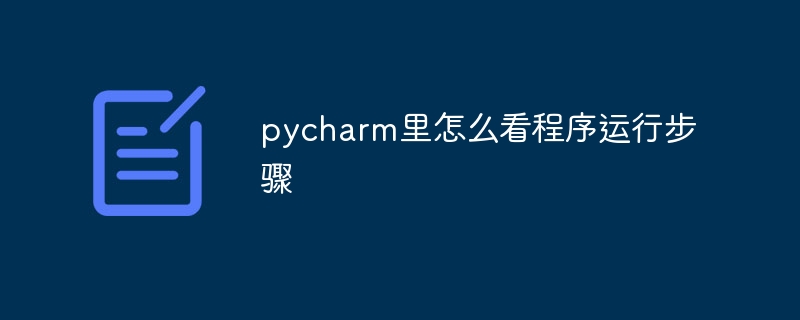Home >Backend Development >Python Tutorial >How to view program running steps in pycharm
How to view program running steps in pycharm
- 下次还敢Original
- 2024-04-18 03:42:47612browse
PyCharm provides the following tools to help debug Python programs: Set breakpoints to pause execution. Start the debugger. Use F11, F10, F7, and F8 to step through the code. View variable values in the Variables tab. View the output in the Console tab. View the stack trace when an exception occurs.

How to view the program running steps in PyCharm
PyCharm provides a variety of tools to help you gain in-depth understanding Steps to run your Python program:
1. Set a breakpoint
Set a breakpoint on the line of code where you want to trace the execution of the program. Click on the empty space to the left of the line of code and a red circle will appear indicating that a breakpoint has been set. When program execution reaches this line, the debugger will pause execution.
2. Start the debugger
Click the "Debug" button on the toolbar (the icon is a flying bug) or press F9 key. The debugger will start, pausing execution at the first breakpoint.
3. Use the debugging toolbar
The debugging toolbar provides a variety of controls to help you execute the program step by step:
- F11 (single step): Move to the next line of code and execute that line of code.
- F10 (single-step entry): Enter the function call and execute the function.
- F7 (Single step skip): Do not execute function calls, but skip them.
- F8 (Continue): Continue executing the program until the next breakpoint is encountered or the program ends.
4. View variable values
You can view the values of all variables in the current execution context through the "Variables" tab. This tab is located in the lower right corner of the code window. You can expand a variable to view its contents, or right-click the variable and select Evaluate Expression to view its value.
5. Console Output
When the program is running, print statements and other output will be displayed in the "Console" tab. This can help you understand the execution flow of the program and identify any errors.
6. Stack Trace
When a program throws an exception, PyCharm will display a stack trace showing the steps of execution and the line that caused the exception. This helps you find and fix problems in your program.
The above is the detailed content of How to view program running steps in pycharm. For more information, please follow other related articles on the PHP Chinese website!

